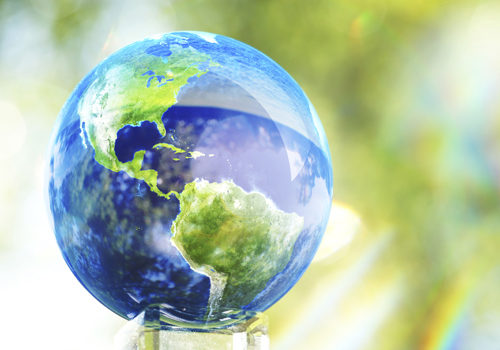At the “Sustainable Harmony: The Successful Marriage of Activism, Research, and Business” session sponsored by Aker BioMarine U.S., several speakers came together to discuss sustainability initiatives born from the joint contributions of scientists and business owners dedicating to the future of our natural resources and spaces.
Alan Lewis, director of food and agricultural policy at the Organic and Natural Health Association, began the session with a comparison; beginning with the cows at traditional industrial dairy facilities, who are held in tight pens for a large portion of their life, are given antibiotics, and often have severely shortened lifespans, compared to cows raised organically with more humane living conditions. Lewis explains that questions like “Where are the cows held? or “Are there pastures?” are questions that need to be asked when buying dairy products like yogurt, and more consumers are beginning to do just that. While there may be a slightly higher price to pay at the register, he explained, there was a veritable laundry list of sustainability benefits to be found, and retailers need to address these issues or put their brands at risk.
One of the greatest assets for communicating sustainability to consumers is eco-labels, said Michael Griff, commercial manager-Americas, at the Marine Stewardship Council. He explained that an eco label “allows consumers to do their own research,” as well as making choices simpler by serving as a quality marker. A lot more goes into an eco label than just paper, though, and Griff explains the extensive work and quality standards that goes into the MSC’s eco labeling program, from third-party auditing for sustainable fish stocks and minimal environmental impact to peer-reviewing their final sustainability assessments. Griff also highlighted traceability as something that more eco-label programs are beginning to focus on.
Rodolfo Werner, PhD, science advisor to the Pew Charitable Trusts & Antarctic and Southern Ocean Coalition, discussed the newly announced Antarctic Wildlife Research Fund (AWR), the result of a unique collaboration between businesses, scientists, activists and consumers to preserve krill populations in the Southern Ocean. Werner explained that krill harvesting has exploded due to popularity for its omega content, but its is also a cornerstone of the Antarctic ecosystem. The AWR is designed to “fill the science gap” to ensure krill continues to be harvested in a sustainable way.
According to Andre Leu, president of the International Federation of Organic Agriculture Movements, “organic means business,” with sales going from $15.2 billion in 1999 to $72 billion in 2013 and countries like Switzerland and Denmark leading the pack. The biggest driver, he explained, is health, not just for better nutrition, but avoiding pesticides and herbicides. Despite what some may say, Leu was adamant that there is no scientific proof of a “safe pesticide blend,” or evidence of a minimal level of exposure, and showed several studies suggesting that exposure to these chemicals can cause a litany of issues in developing and unborn children, ranging from leukemia to autism. As “super-weeds” resistant to herbicides necessitate stronger and stronger chemical blends, Leu concluded with a call for consumers and retailers to support organic farming and curtail this disturbing trend.
Tom Newmark, cofounder of The Carbon Underground, underscored that being “sustainable is not enough.” While this statement may seem to fly in the face of the rest of the session, he explained that situations like the level of CO2 in the atmosphere or the fact that 30%-70% of the world’s topsoil is gone are situations that cannot be “sustained.” However, Newmark had an answer: regenerative organic agriculture. A practice that his organization is working to promote, this style of farming involves plants taking CO2 out of the atmosphere by the simple act of photosynthesis. Some farms have already put this into practice, with Newmark saying that one hectare of land can remove nine tons of CO2 and put it underground per year. While all the sustainable issues here are vital for our planet and health, it is also important to consider reversing damage that has already been done as well.
Published in WholeFoods Magazine, May 2015










